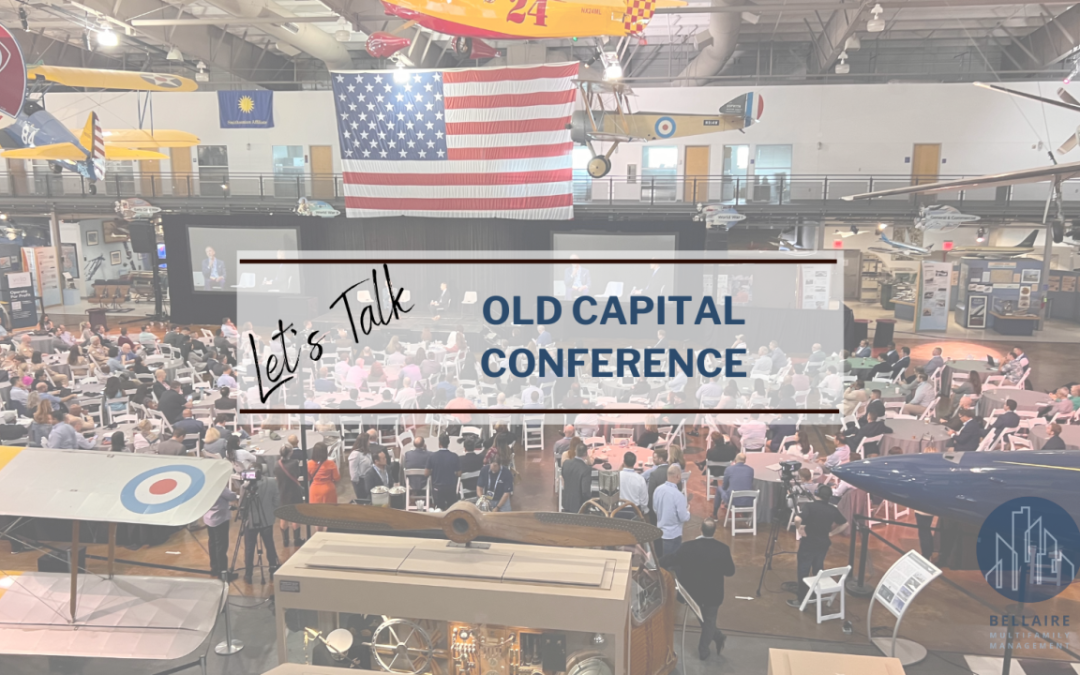The Old Capital Conference in Dallas, held last week, provided a platform for real estate professionals to gather, exchange insights, and discuss the challenges and opportunities facing the market today. Below you will find our takeaways from the conference.
A Shifting Market Landscape: One of the standout observations at the conference was the acknowledgment that the long-anticipated “down” market has finally arrived. For some time, buyers have been waiting for an opportunity to secure favorable deals, and now that it’s here, they find themselves facing a unique set of challenges. Rising interest rates and insurance costs are among the headwinds causing some discomfort. However, the key takeaway is that the market conditions have indeed changed, and buyers and sellers must adapt to these new realities.
Dallas-Fort Worth’s Resilience: Dallas-Fort Worth (DFW) continues to be a hotspot for real estate investment. Capital inflows into the region remain strong and lead the nation. Furthermore, cap rates in DFW are notably low, particularly in comparison to other markets referred to as the “smile” states. The region’s allure has attracted a fresh wave of buyers looking to tap into its potential, emphasizing DFW’s resilience and ongoing appeal to investors.
Cap Rate Insights: Cap rates, an essential metric in real estate, were a subject of discussion at the conference. Class A properties are fetching cap rates in the 5% range, highlighting the premium investors are willing to pay for top-tier assets. Meanwhile, Class B properties are seeing cap rates in the high 5s to 6%, reflecting the competitive nature of this segment. Class C properties fall within the 6% range, offering potentially attractive investment opportunities for those willing to take on more risk.
Market Challenges and Bid-Ask Spread: An eye-opening statistic shared at the conference was that out of 183 listings this year, 101 have failed or not reached the closing table, equating to a substantial 55% failure rate. This trend is expected to continue, with the year likely ending around a 60% failure rate. The wide bid-ask spread, the difference between what sellers hope to receive and what buyers are willing to pay, is a significant challenge in the current market environment.
The Impact of Rate Volatility: Deal-making in the real estate sector has been easier during periods of rate stability, as evidenced by the smoother transactions between March and June. However, the sudden rise of treasury yields by 50 basis points in a single month has added complexity to closing deals. Rate volatility necessitates greater agility and adaptability in negotiations and financing strategies.
Liquidity in Sub $15M Deals: In today’s market, sub $15 million B/C deals are considered more “liquid” than their larger counterparts. Many investors have the capacity to raise a few million dollars, while securing tens of millions has become a more challenging endeavor. This observation underscores the shifting nature of real estate investment opportunities.
Foreclosures and Seller Flexibility: The emergence of foreclosures is a notable development in the current real estate landscape. Some sellers now have to dig into their pockets to facilitate sales. This dynamic underscores the importance of flexibility for both buyers and sellers, as well as a willingness to adapt to market realities.
One idea that was echoed throughout the conference was to survive until 2025 and thrive in 2026. Now is the time to prepare your operations team to be proactive in this market, plan for stagnant rent growth, and minimize expenses where applicable.
As the industry navigates changing conditions, professionals must stay informed, be flexible, and be adaptive in their buying, selling, and investing strategies. Dallas-Fort Worth remains a resilient and attractive market, but success requires a keen understanding of market dynamics and a readiness to respond to new challenges and opportunities as they arise.

